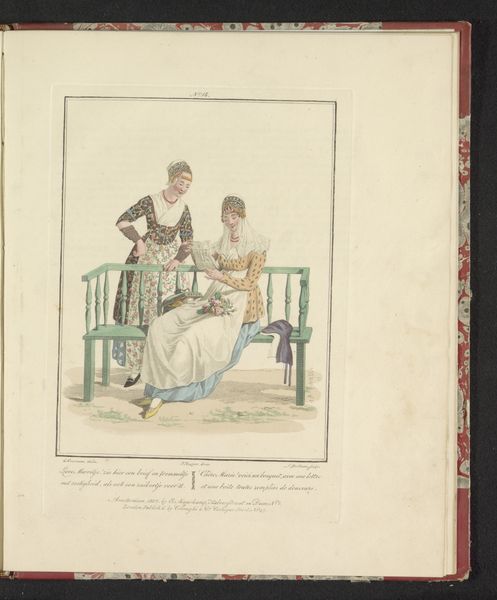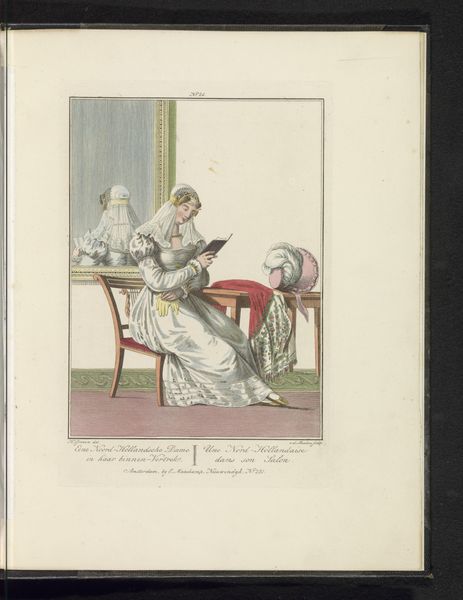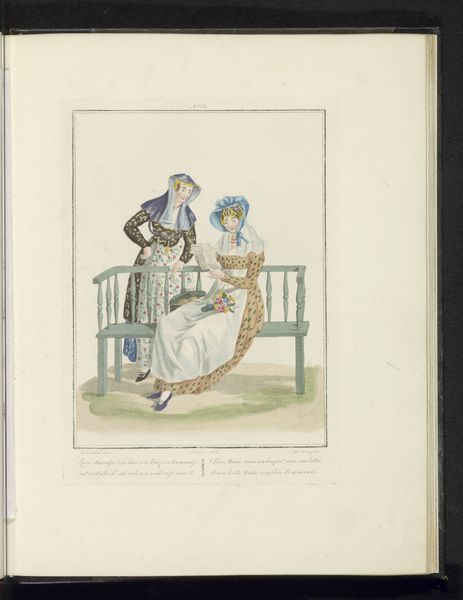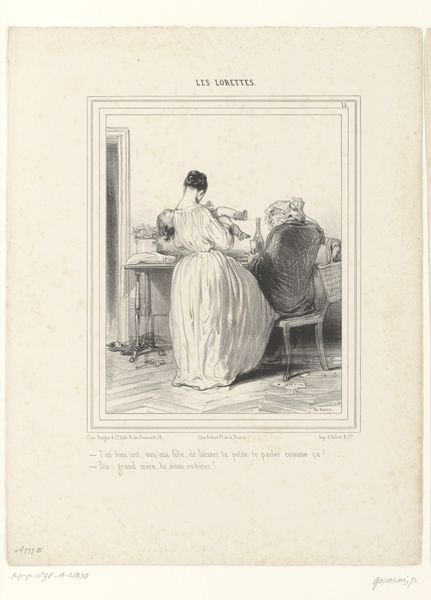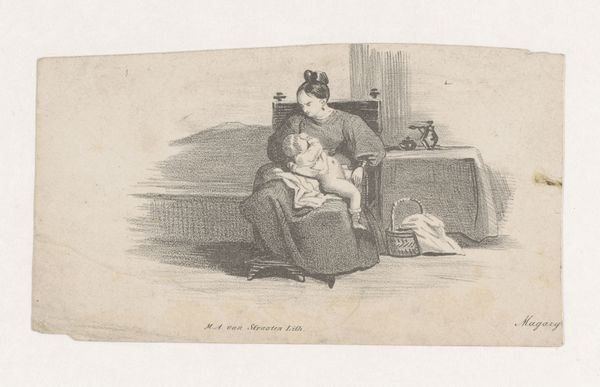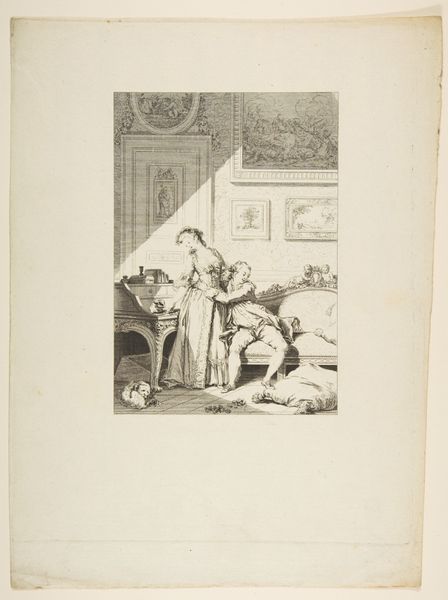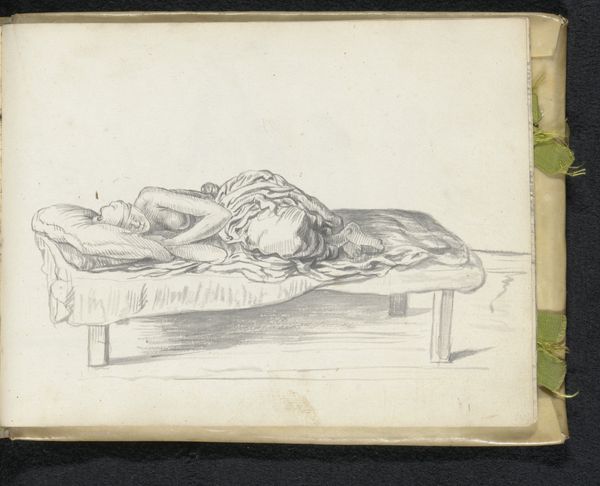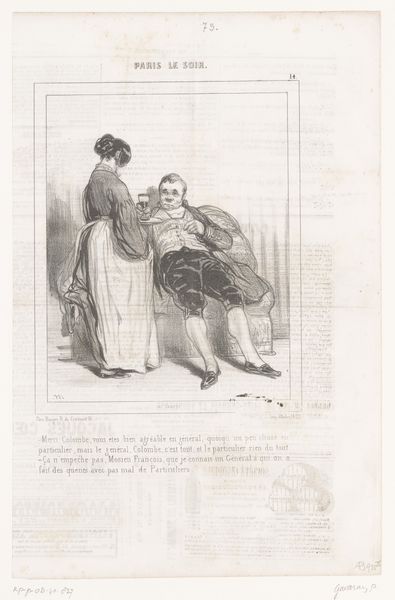
drawing, coloured-pencil, paper
#
portrait
#
drawing
#
coloured-pencil
#
paper
#
coloured pencil
#
romanticism
#
costume
#
genre-painting
Dimensions: height 124 mm, width 91 mm
Copyright: Rijks Museum: Open Domain
Curator: Welcome. Here we have “Twee meisjes uit Noord-Holland,” or "Two Girls from North Holland," a coloured-pencil drawing on paper created around 1806 by Ludwig Gottlieb Portman. Editor: There’s an immediate stillness to this drawing, almost as if we’ve stumbled upon a quiet, intimate moment frozen in time. Curator: Yes, and the costumes! Note the intricacies of the lace, the specific cut of the cloth. These details speak volumes about regional dress and its production. These were not merely decorative choices, but signifiers of community, perhaps even of wealth and status tied to particular trades. Editor: Indeed, the head coverings especially grab my attention. One girl has what appears to be a heavily patterned bonnet, while the other's head covering has tiny repetitive dots across its fabric. These distinct differences within the same scene must denote a nuanced layer of meaning. It’s like a visual language. Perhaps this refers to differing communities, marriage status, or local fashion trends? Curator: The artistic process itself is relevant. Coloured pencil, readily available but perhaps seen as less prestigious than oils, allowed Portman to capture the minutiae of these dresses with a detail that resonates even now. This raises questions of the work's intended audience. Was this for personal enjoyment, a record for scholarly purposes, or something else? The social context of portraiture and its relationship to class are critical here. Editor: Beyond the social signifiers you mentioned, these garments represent deeper traditions. Note the almost folkloric feel of their appearance. They aren’t just wearing clothing, they’re embodying centuries of cultural heritage and visual storytelling. It links back through generations. I also think of the Romanticism movement during that period. Even though the portrait isn't idealized in the traditional sense, it finds beauty in simple rurality and genuine representation. Curator: Certainly. We have to consider what that representation accomplishes within its historical moment. Portman's choice of coloured pencil, combined with the specific detail applied to the clothing's construction, offers invaluable insights into both the economic and social aspects that formed this artistic rendering. It challenges preconceptions about the material realities underpinning what we might traditionally label as fine art. Editor: I concur. Examining Portman's careful rendering alongside these visual cues provides a window into a society seeking to preserve—or perhaps even construct—its identity through imagery. This colored pencil portrait tells an intriguing story of enduring significance and symbolic resonance.
Comments
No comments
Be the first to comment and join the conversation on the ultimate creative platform.
